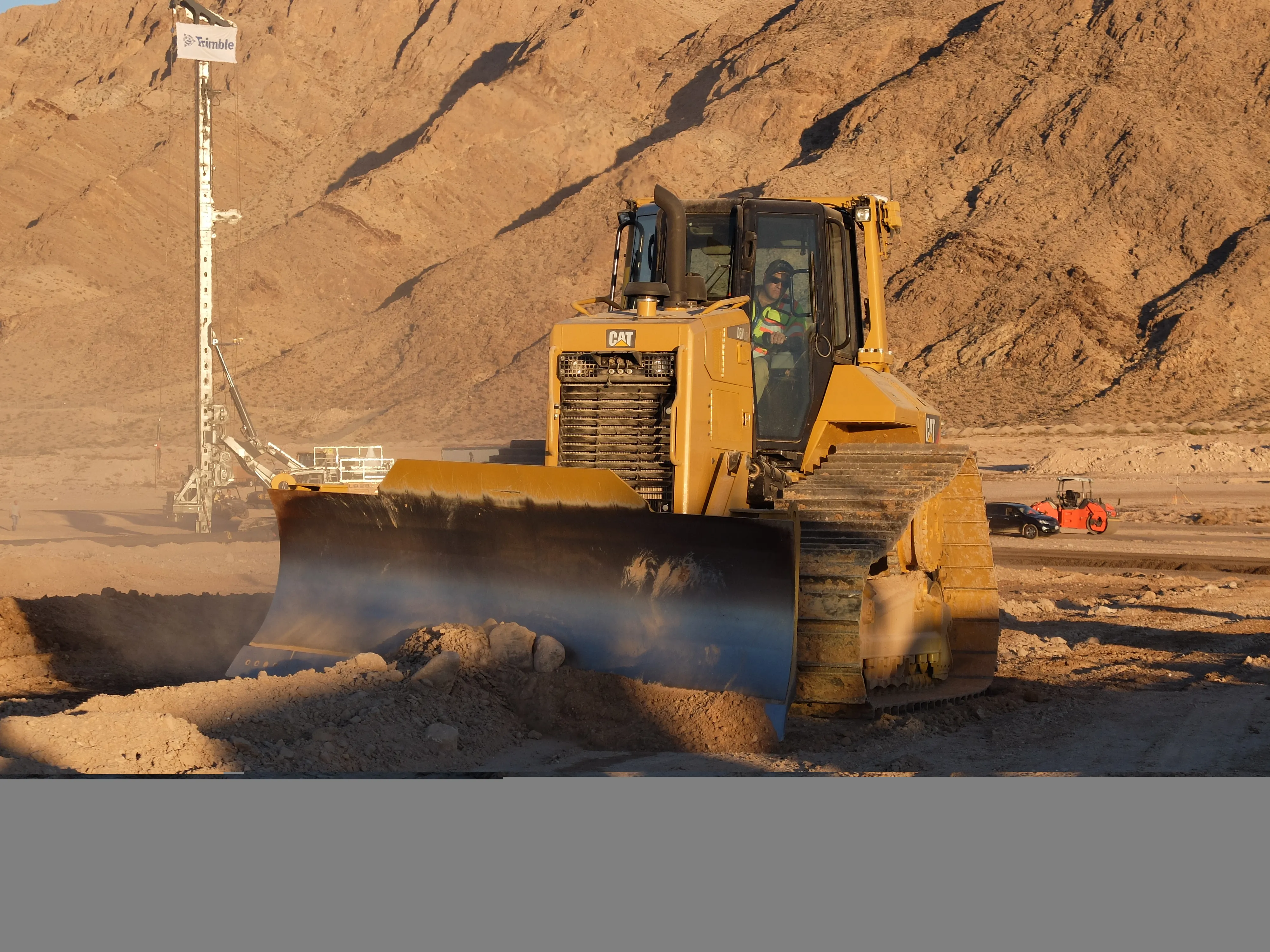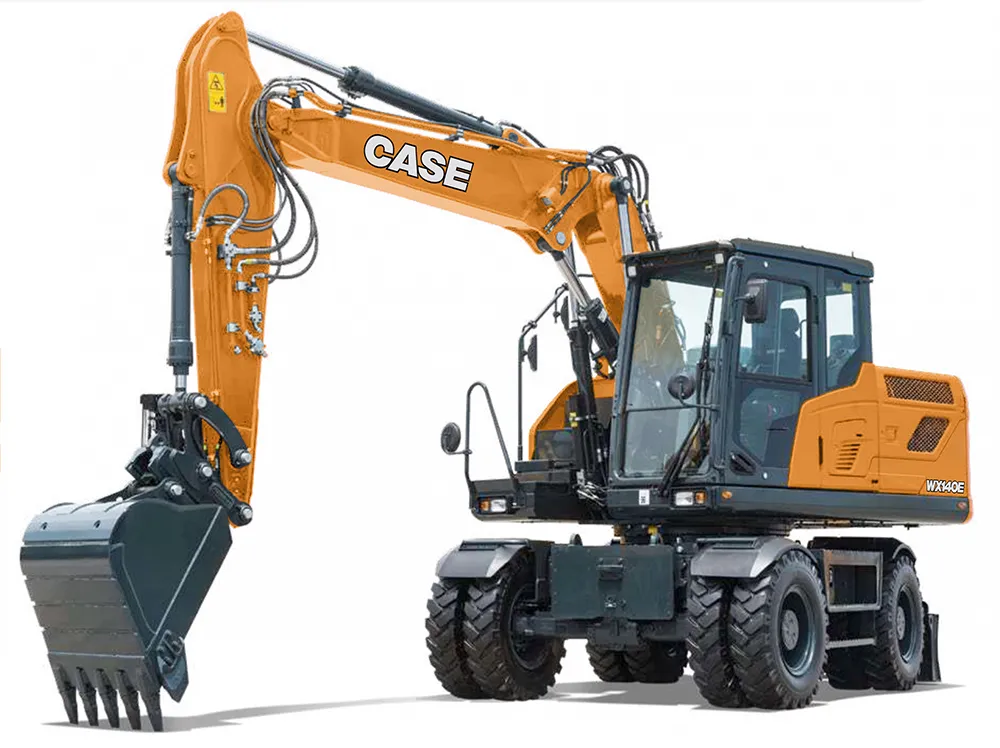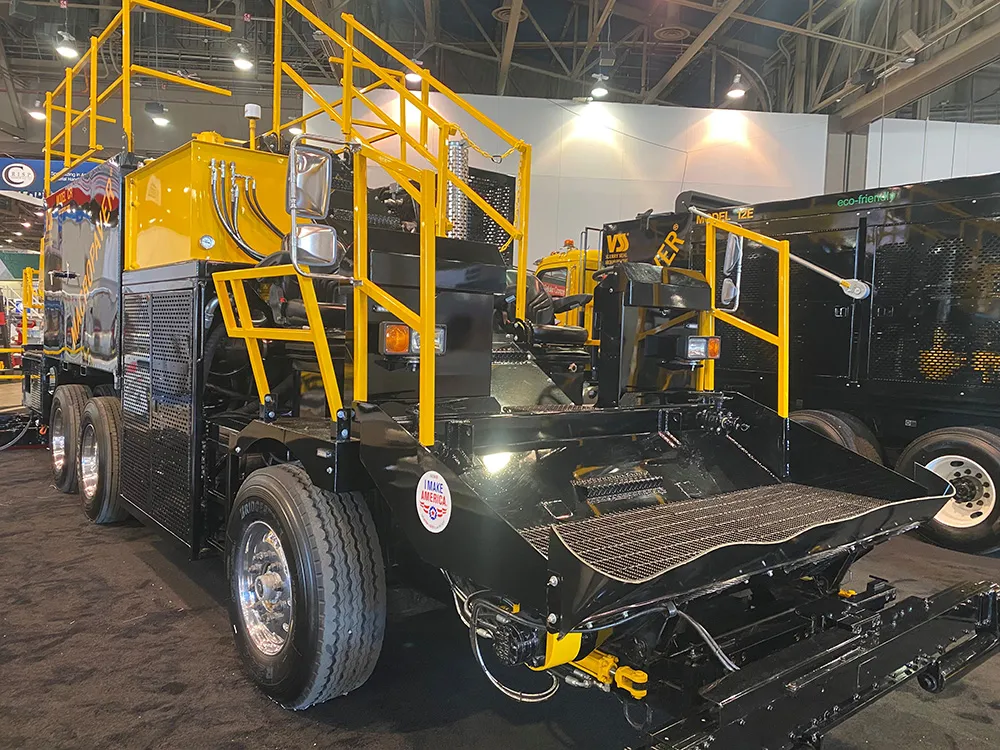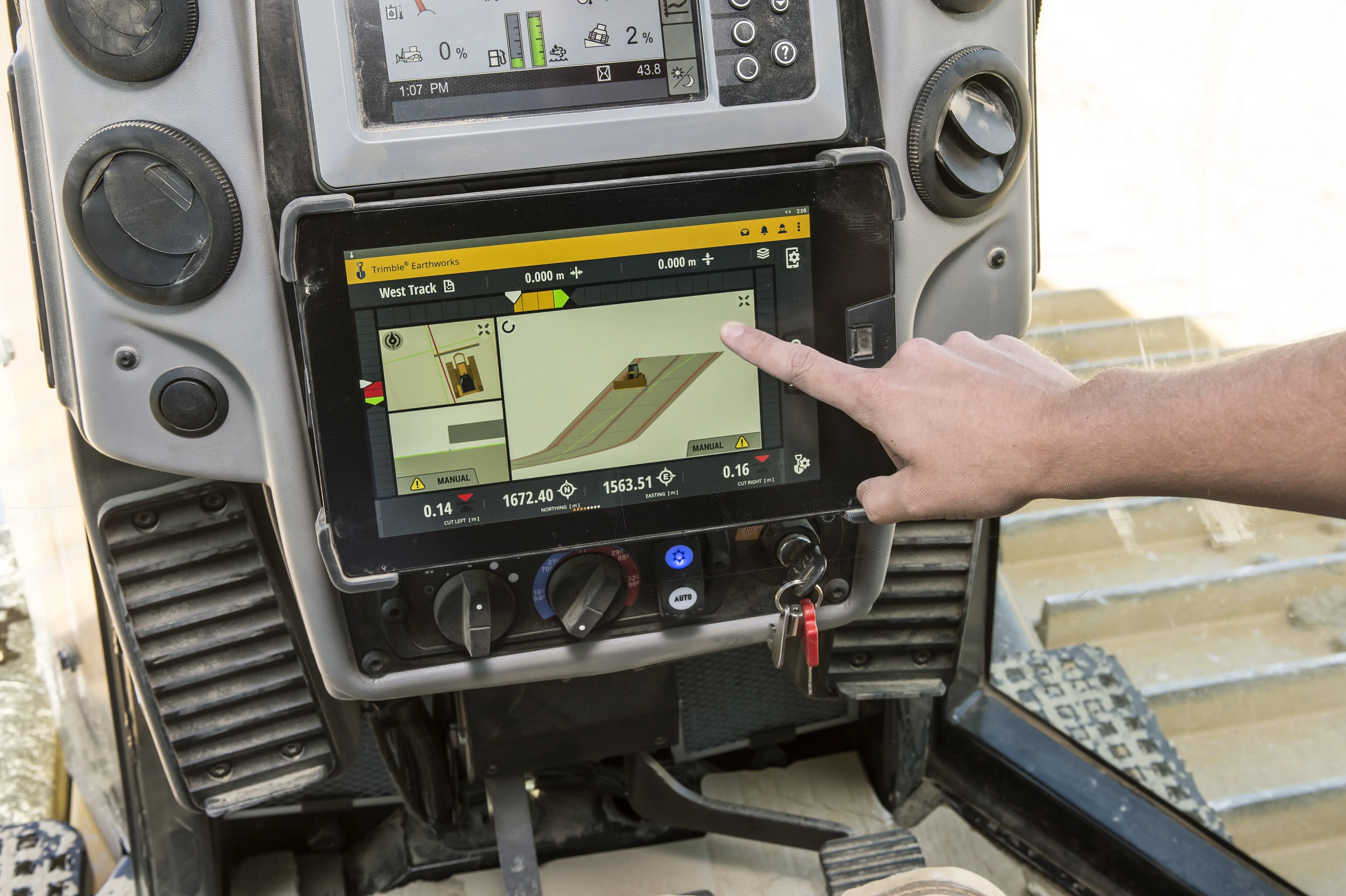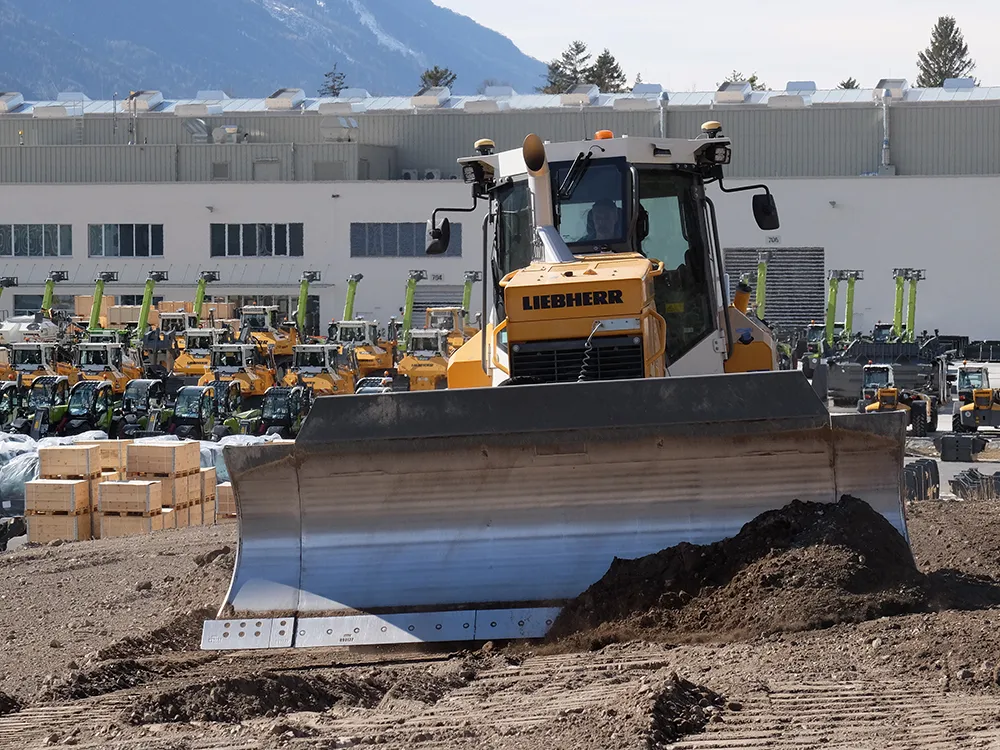
These machines are amongst the most complex to drive properly and with a global shortage of operators for equipment of all types, the use of machine control technology has become increasingly important.
Liebherr is taking the use of machine control systems to new heights with the introduction of its Generation 8 dozers. The latest machine in the range is the Generation 8 version of the PR 766, Liebherr’s 54tonne class dozer, joining the line-up of PR 716-PR 756.
Productivity, versatility and efficiency are said to be important features of the Generation 8 models. The machines benefit from very low working noise, low engine speeds and hydro-elastic cab mounts that ensure smoother operation, while the large cabs offer a good all-round view for maximum visibility.
However, the most important feature of the Generation 8 units comes in the shape of the latest operator assistance technology.
The dozers offer three levels of machine control. The onboard Liebherr systems are based around inertial navigation (IMU) technology and operate independently of GPS, an important benefit for some sites where satellites may be obscured. The automatic free grade system uses two IMUs, one of which is mounted on the blade while the other is on the machine.
The first level uses the IMUs to achieve active blade stabilisation. This means that the blade will effectively float so as to ensure an optimum load, and preventing the ‘washboard’ effect caused by an inexperienced operator over-correcting. The system helps to increase productivity and saves time, while also boosting safety as the operator can focus on driving the machine rather than having to concentrate on manually controlling the blade position to achieve a perfect grading.
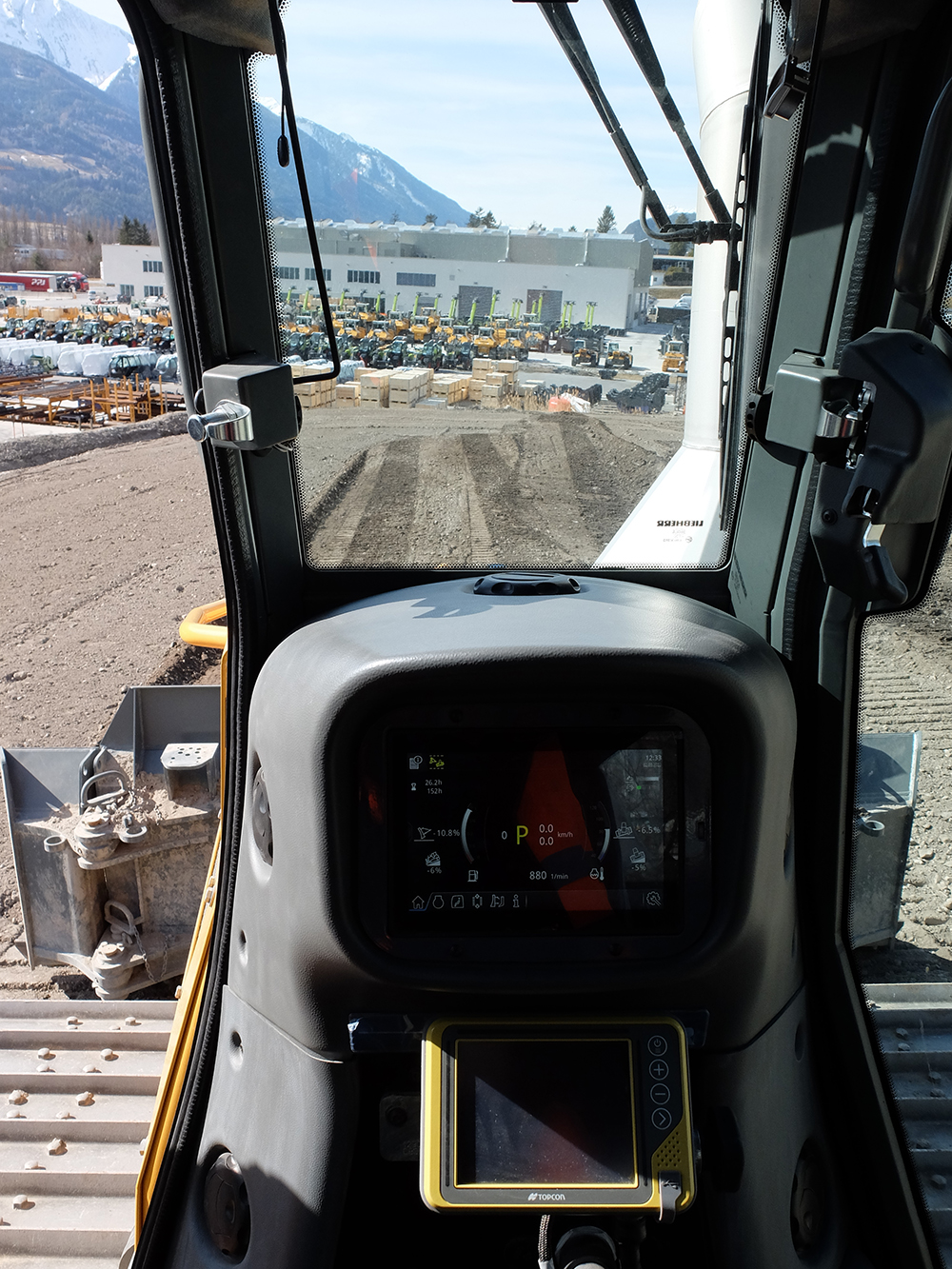
he second level allows basic modelling of 2D surface, providing automatic and active position control of the blade to a specified target inclination. The operator can set the definition and choose blade inclination if required. As it also uses the Liebherr IMU technology, the system can operate without the need for GNSS receivers or base stations. A user can model a 2D surface without the need for a rotating laser and just needs to start with a reference point from the site surveyor. The blade then lowers automatically to the reference measurement, allowing the operator to deliver a 2D surface even over large distances and in different pushing directions. The system is also said to allow grading speeds that could not be achieved previously. As with the simpler level one system, this boosts productivity and allows the operator to focus on driving the machine rather than watching the load in the blade. Of note too is that the IMUs do not need regular calibration as would have been the case with earlier generation systems.
Meanwhile, the third level offers full 3D technology and uses systems from Topcon, Leica Geosystems or Trimble depending on the customer preference. These systems can be used to deliver BIM capabilities onsite. Interfaces for the machine control systems are integrated into the hydraulics during manufacture, which makes installing the technology far simpler.
However, it is worth noting also that the operator assistance systems are optional for emergent markets with lower levels of regulations.
A range of other features help ensure high performance. All the Generation 8 dozers feature box-section chassis to eliminate deflection and ensure better grading. Liebherr was a pioneer of hydrostatic drives in dozers, which offer smooth transition between speeds as well as high precision and also lower wear rates on running gear, a key cost factor for bulldozer maintenance. To ensure reliability, the driver receives precise information about the oil level and temperature in the final drives.
With the LiDAT fleet management system, a customer can plan the next service and optimise scheduling for maintenance works. The system also allows the user to notify the service partner and order spare parts including express delivery using the myLiebherr app on a cellphone.


